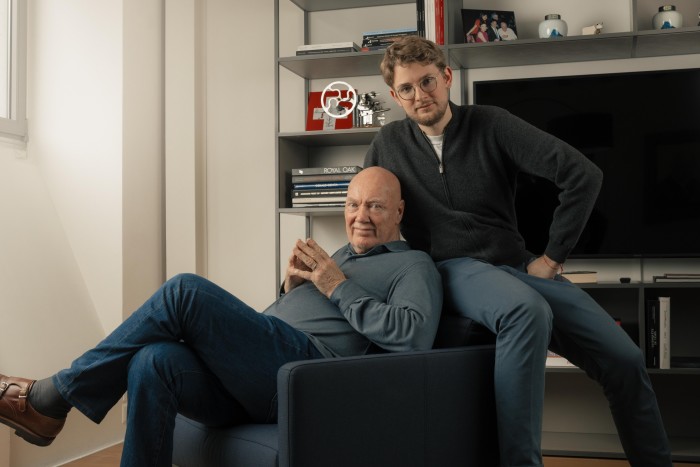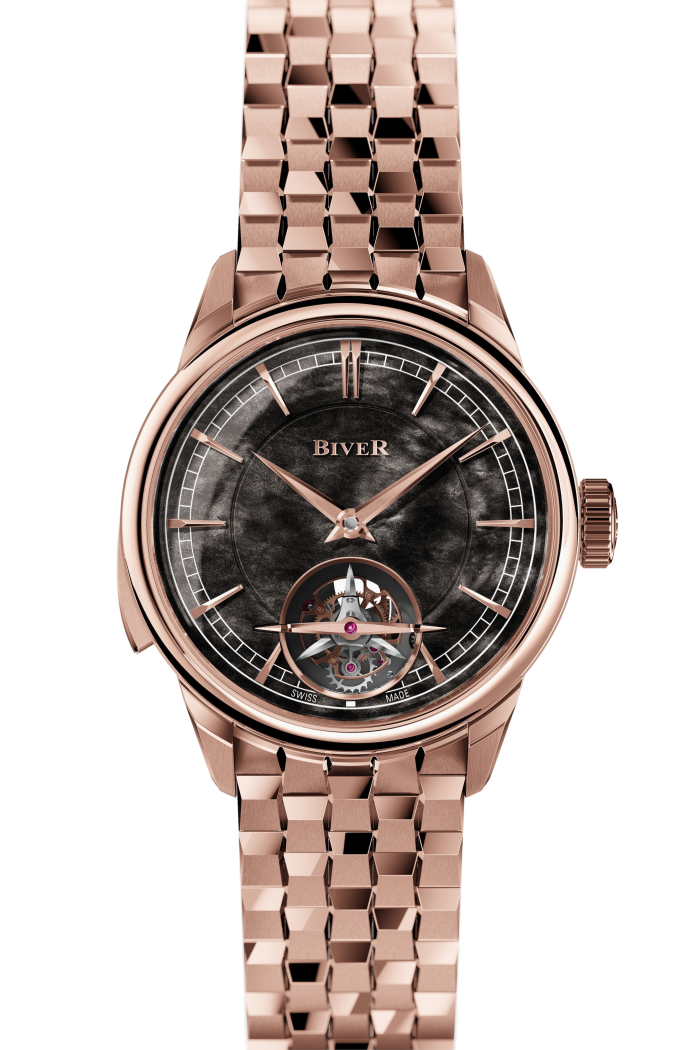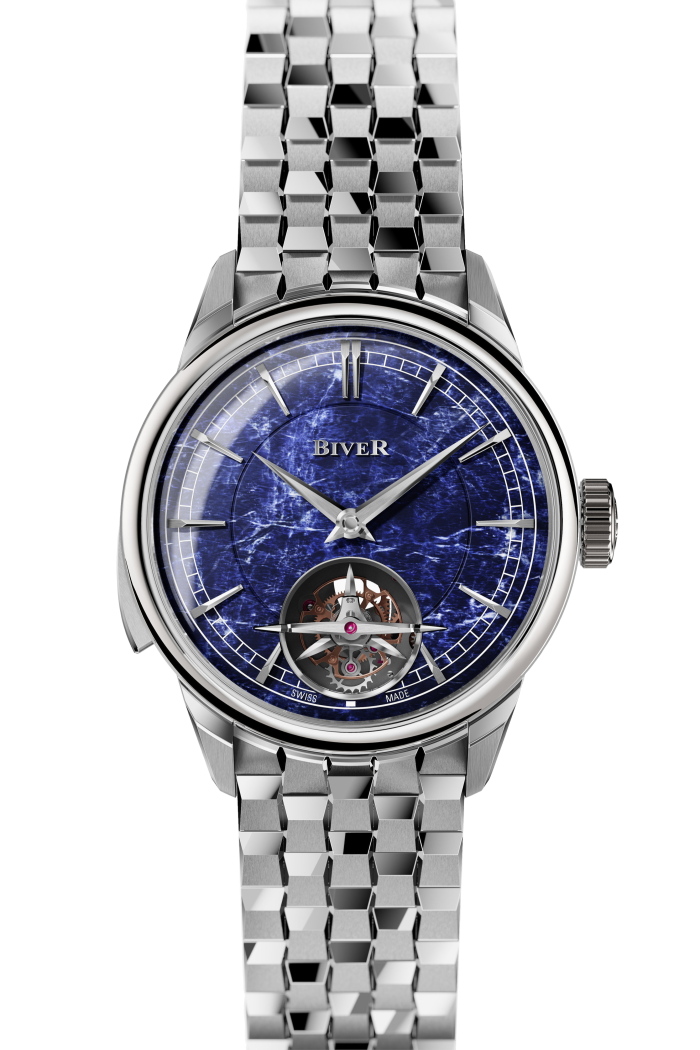Jean-Claude Biver: ‘Luxury is decorating everything’

Roula Khalaf, Editor of the FT, selects her favourite stories in this weekly newsletter.
Consultancy, motivational speaking, and investing in start-ups were simply not enough to keep septuagenarian watch industry veteran and professional disrupter, Jean-Claude Biver, occupied after retirement.
And the outcome of his existential crisis is one of the most anticipated watch launches of the year. Today, a day before the opening of the Watches and Wonders fair in Geneva, several industry figures gathered at the 73-year-old’s workshop outside the city to inaugurate the Biver brand, which he is launching with his 22-year-old son, Pierre. “I want to help my son to enter the watch business, and, eventually, to be my successor,” he says.
During the past 18 months, the Bivers have sunk SFr12mn ($12.9mn) into the business in order to finally launch their first self-winding minute repeater tourbillon — with a SFr500,000 pricetag — limited to 15 watches.
A single Biver minute repeater will also be offered at Phillips’s spring auction in May. “We’re trying to make it become sort of [a] Grail,” says Pierre, before outlining plans for another “much simpler and more affordable” model down the line.


With about half a century in the Swiss watch business under his belt, Jean-Claude is one of horology’s big beasts. He started at Audemars Piguet in 1973, bought the name Blancpain, rebuilt it and then sold it to the Swatch Group, where he worked closely with its founder, Nicolas Hayek, on Omega. He relaunched the dying brand Hublot — which was subsequently bought by LVMH — where he ran the watch division until he retired in 2018. Now, he is back and this time it is personal, with his own name on the watch dial.

This article is part of the Watches & Jewellery special report, a section covering the business side of the luxury industries. The next edition will publish with the FT worldwide on Monday March 27
Aesthetically, the Biver brand references the tropes of today. There is a distinctive five-link bracelet design that chimes with the recent focus on integrated case and bracelet designs, while the finishing is in line with the current mania for independent brands.
The minute repeater’s movement, made by the Neuchâtel-based manufacturer Cercle des Horlogers, features enlarged wheels to show off the fact that they are decorated, an unusual focus for a watchmaker. “Luxury is not just decorating what people see,” says Jean-Claude. “It is decorating everything. I call this is invisible visibility.”
He also wants to leave his mark inside the movement. “That is why we started our own poinçon [hallmark],” he says, going into direct competition with the already-existing poinçon de Genève [hallmark of Geneva] which most watchmakers aspire to get. “Our poinçon is more difficult to follow than the poinçon de Genève,” says Jean-Claude of his proprietary quality seal with its emphasis on movement decoration.
Neither Biver pretends to be a regular watchmaker — they are instead returning to the commercial approach that defined Swiss watchmaking during the 18th century: établissage. The établisseur purchased basic components from various suppliers and then had them assembled.
There are considerable benefits to this approach. The Biver team is relatively small, with 12 people working at the HQ. They include such high-calibre hires as production director Francois Perez — formerly of Concepto, the movement maker behind Bulgari’s ultra slim Octo Finissimo.
Then, there is speed. Instead of requiring three or four years to bring a watch to market, the Biver team has taken less than 18 months.
Among the suppliers Jean-Claude is working with is Efteor, a small Swiss casemaker supplying Greubel Forsey and A Lange & Söhne, as well as Chanel-owned bracelet maker Chatelain.
Jean-Claude is particularly proud of the sodalite dial with applied gold indices, the back of which is finished with perlage. “It’s the most beautiful dial. I wrote to the maker and said it’s the best I have seen in 50 years.”
However, the low volumes and the higher standards that they have set themselves come at a premium. For instance, each sodalite dial costs more than SFr20,000 and there is an 80 per cent wastage rate. Meanwhile, a set of three gold hands finished back and front to his standard costs more than SFr5,000. Jean-Claude does not specify his margins, but says he has make an effort to keep them fair. He does not have a distributor, but works directly with just a handful of retailers to keep costs down.
The 42mm minute repeater tourbillon is something of a place holder heralding a core range of a minute repeater, time-only, and chronograph, all in 38mm cases. The chronograph movement being developed exclusively for Biver by Dubois Depraz will feature a 1/10th of a second indicator visible through an aperture in the upper half of the dial. The time-only model will be produced in slightly larger numbers — about 100 per year — and can be adapted for small limited series at the request of clients.
“We’re trying to push the level of execution,” says Pierre. “We’re not trying to be the most innovative, we’re not trying to disrupt the whole market.”
If history is anything to go by, however, Jean-Claude tends to be disruptive whether he tries to be or not.
Comments